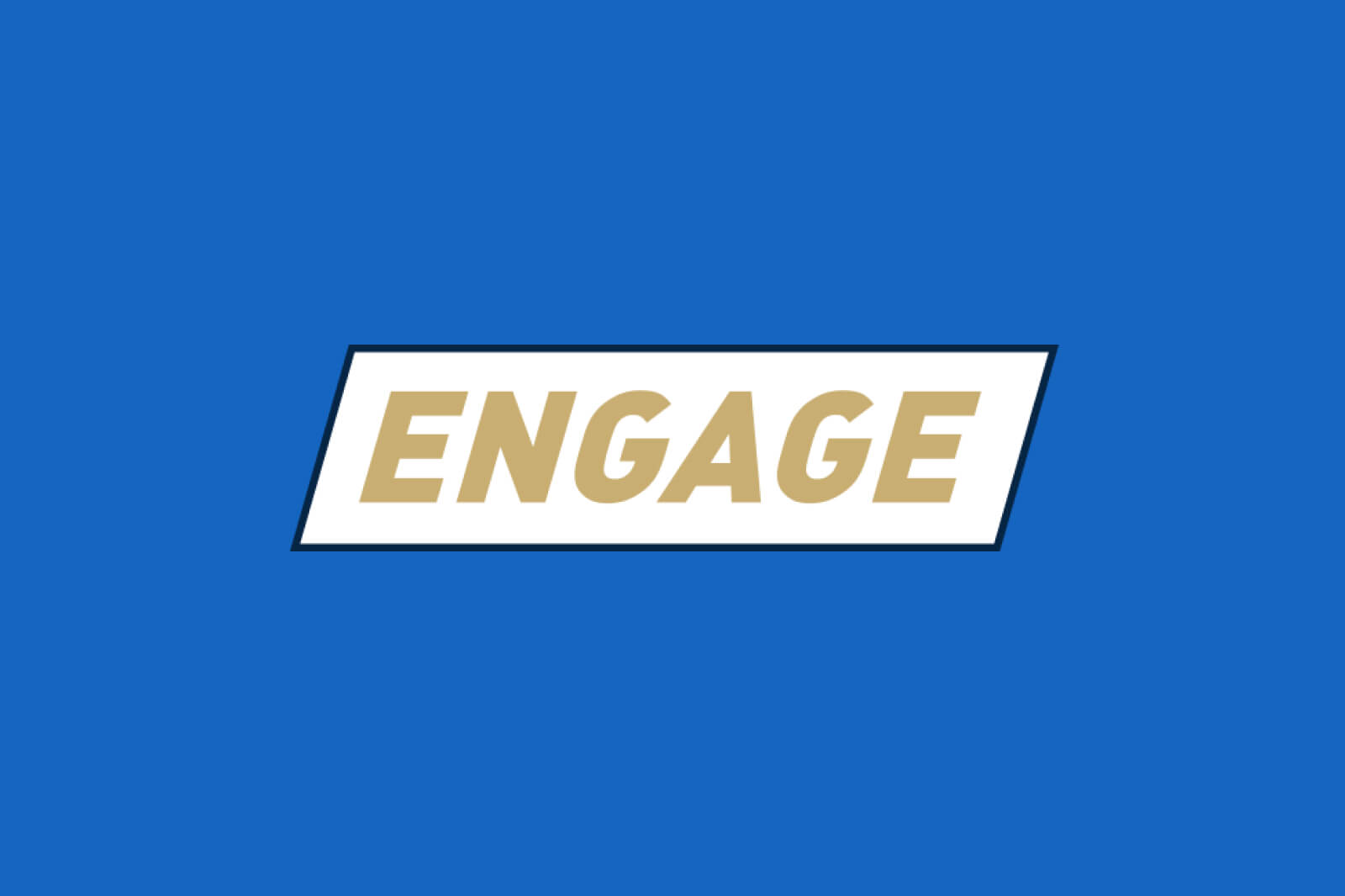“What is your biggest challenge with virtual events?”
When asked in a survey, event planners usually give the same answer – audience engagement.
To put a number to it, more than 73% are battling with keeping their online audience engaged.
No wonder.
As event organizers, we are fighting for our participants’ attention with the most dangerous of opponents: open browser tabs, email, Slack, Twitter, Instagram – you name it.
In this context, professional speaker coach, Nathan Gold, aptly says: “Audience interaction for online events has gone from nice-to-have, to must-have.”
So when we got the opportunity to further explore the possibilities of online interaction, we embraced it enthusiastically.
We’re talking here about ENGAGE – a special three-hour event on virtual engagement, organized by none other than Julius Solaris.
Together with his team at Event Manager Blog, they’ve been relentlessly pushing the boundaries of the events industry for over a decade now.
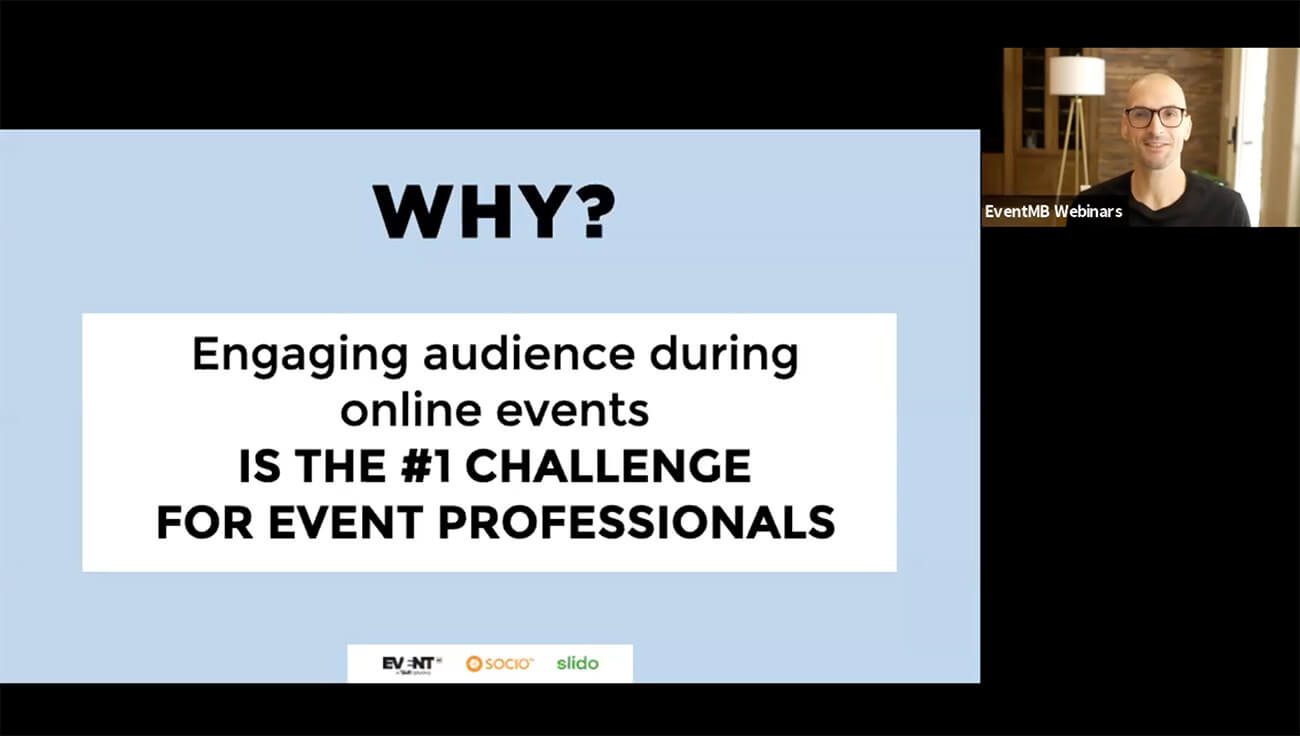
The promise of the event was clear.
- Experiment with new session formats.
- Hear actionable tips from the experts.
- Experience various engagement techniques first-hand.
And the result?
Over 1,200 participants joined the event online, with 750 of them actively participating in the discussions, or expressing their opinion, via the Q&A and live polls.
It was incredible!
There were a ton of great ideas tested. Here is my personal dissection of the event and a number of practical things that can elevate any virtual event.
1. Put all speaker material in one slide deck
Running a virtual event with multiple speakers (and multiple slide decks) is a real challenge.
Choppy transitions can spoil the whole experience. And ENGAGE hosted almost 20 presenters.
To avoid any hiccups, Julius did a brilliant thing – he created one master deck that contained ALL presentations and instruction slides.
He navigated through the master deck himself, always being in full control.
When the time came, he simply gave a word to the remote speaker and advanced her slides remotely. It made the entire flow super smooth.
Get inspired: If you don’t have a tech team behind you, putting all slides in one place will be a life-saver for you. You can then either advance slides yourself upon a cue or, if you’re using Zoom, give remote control to a speaker.
2. One platform
We also wanted to create a frictionless experience for online participants so they could easily engage with the speakers.
To do this, we put Zoom Live Webinar stream and Slido side by side via our integration. And participants joined just via a simple link.
During the event, participants could watch presentations, ask questions, or vote on live polls all from one place.
Designed in this way, content married interaction into a well-functioning relationship.
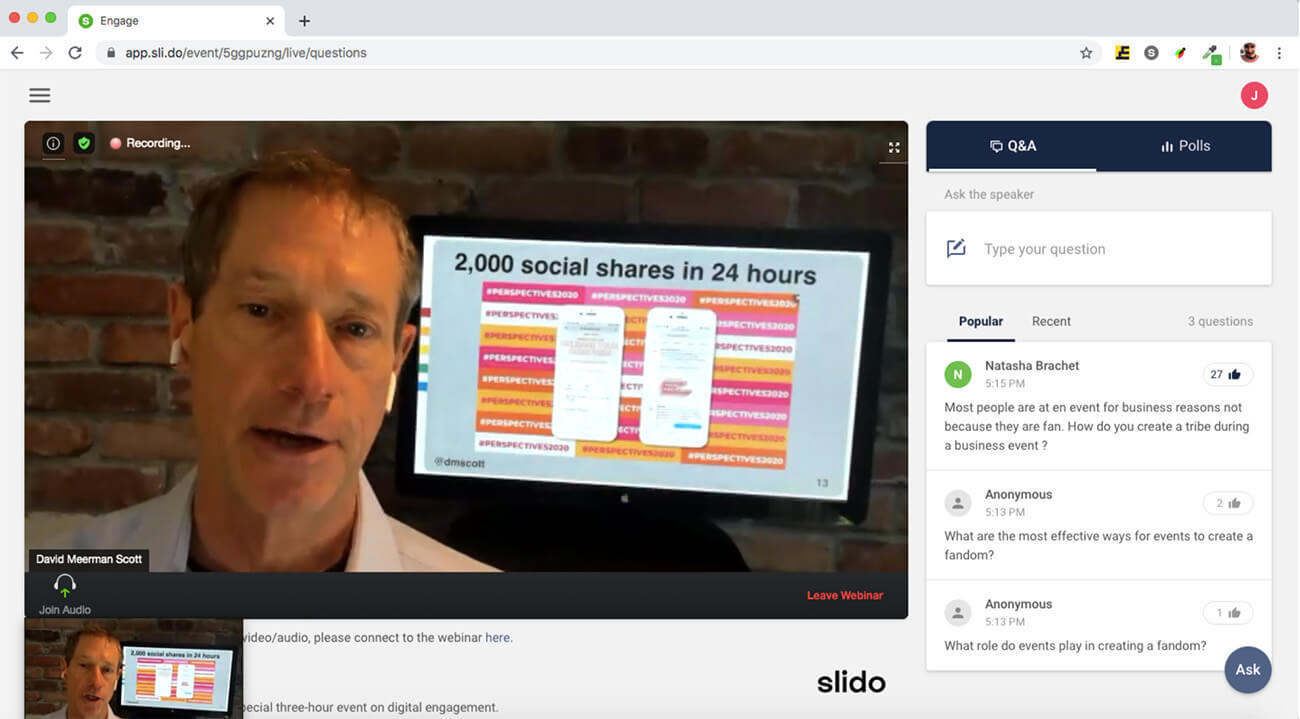
Read also: Switching an Event from Live to Virtual in 5 Days
3. Have at least two facilitators
Now let’s take a look at how the event was facilitated.
If there’s one key thing that I’ve learned about virtual events, then, it’s that you need a co-facilitator.
I was excited when Julius asked me to join as the voice of the audience. My task was to keep an eye on the incoming questions from the audience, and then ask those that had the highest number of upvotes.
What this setup allowed us to do, was enable Julius to fully focus on the run of the show, while keeping track of time, advancing slides, and moderating transitions. He was the master of the ceremony.
On the other (virtual) side, I could concentrate on the interaction, monitoring incoming questions, and thinking up the best way of how to put them into the context of what was said. Also, I was able to coordinate with my backstage colleague, Zofia, who was approving the audience questions before they went live.
Get inspired: Always invite someone to help you deliver content, monitor the chat, or ask audience questions, as I did during ENGAGE. It will elevate your virtual event to the next level.
4. Run short Q&As throughout
Where our facilitators’ collaboration truly came to life, was during 3-min Q&A sessions, which we held after most of the talks in order to keep people engaged.
Once the talk was over, Julius gave me a word, and I asked the top 1-2 questions to the speaker.
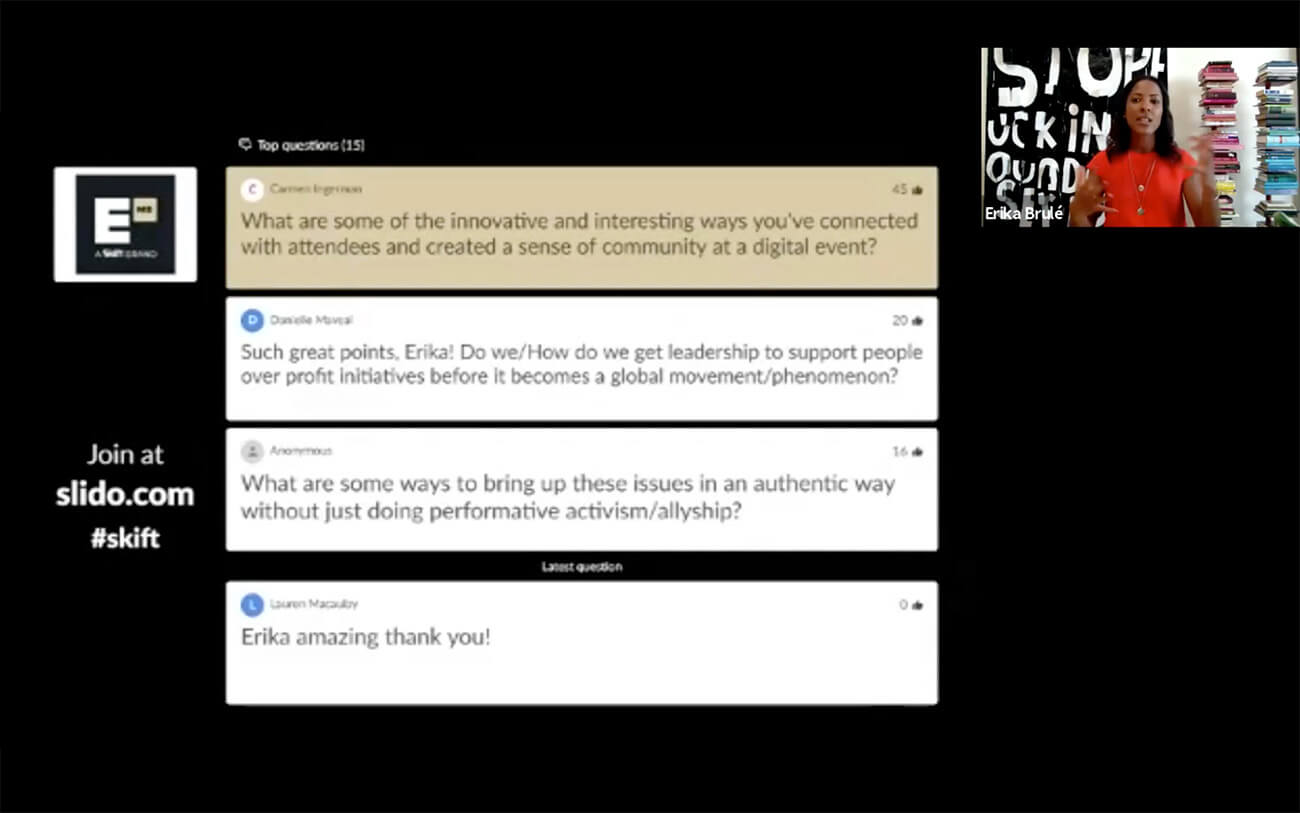
By doing this, we achieved three main things:
- Brought people repeatedly into the action and kept them on their toes.
- Made Q&A sessions relevant – if you keep Q&A for the end, people don’t remember what was said earlier
- Demonstrated that their questions truly matter and that this event was designed for helping them with their challenges.
Get inspired: Don’t wait ‘til the very end to run a Q&A session. Instead, have a number of short Q&As spaced out throughout your event to keep the engagement high and conversations up to point.
5. ‘You Decide’ Session: Give control to the participants
There’s nothing more powerful than giving the audience control to steer the event.
That’s exactly what Julius decided to do.
The second block consisted of a series of four 15-min talks. Speakers Corey, Jonathan, Anne, and Miguel had to prepare two topics each.
Before they started, it was up to the audience to vote on the topic they wanted to hear about from them.
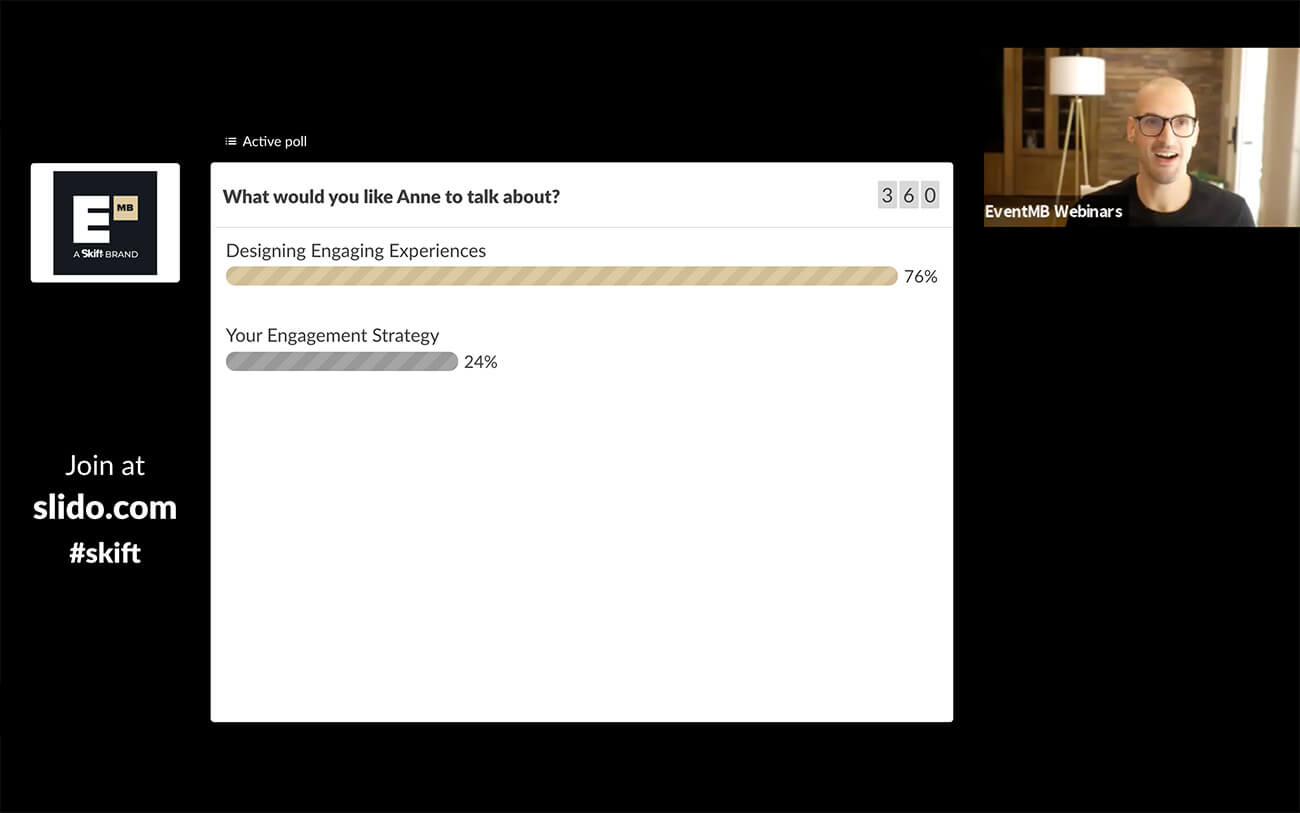
Once the audience spoke, the speakers took it from there, and delivered a preferred talk!
Get inspired: No one knows the challenges of your participants better than your participants. Give them the reigns during your event. Let them vote on the talks they are eager to hear, crowdsource the topics they want to discuss – even let them become one of the speakers.
6. Song Division
Virtual engagement is not only about technology. With this in mind, Julius invited John Lombardo from SongDivision to compose a song for the ENGAGE event.
Here is how it worked:
At the start of the event, the audience voted what style of music they wanted the song to be. 44% voted for Rock. So Rock it was. First step done.
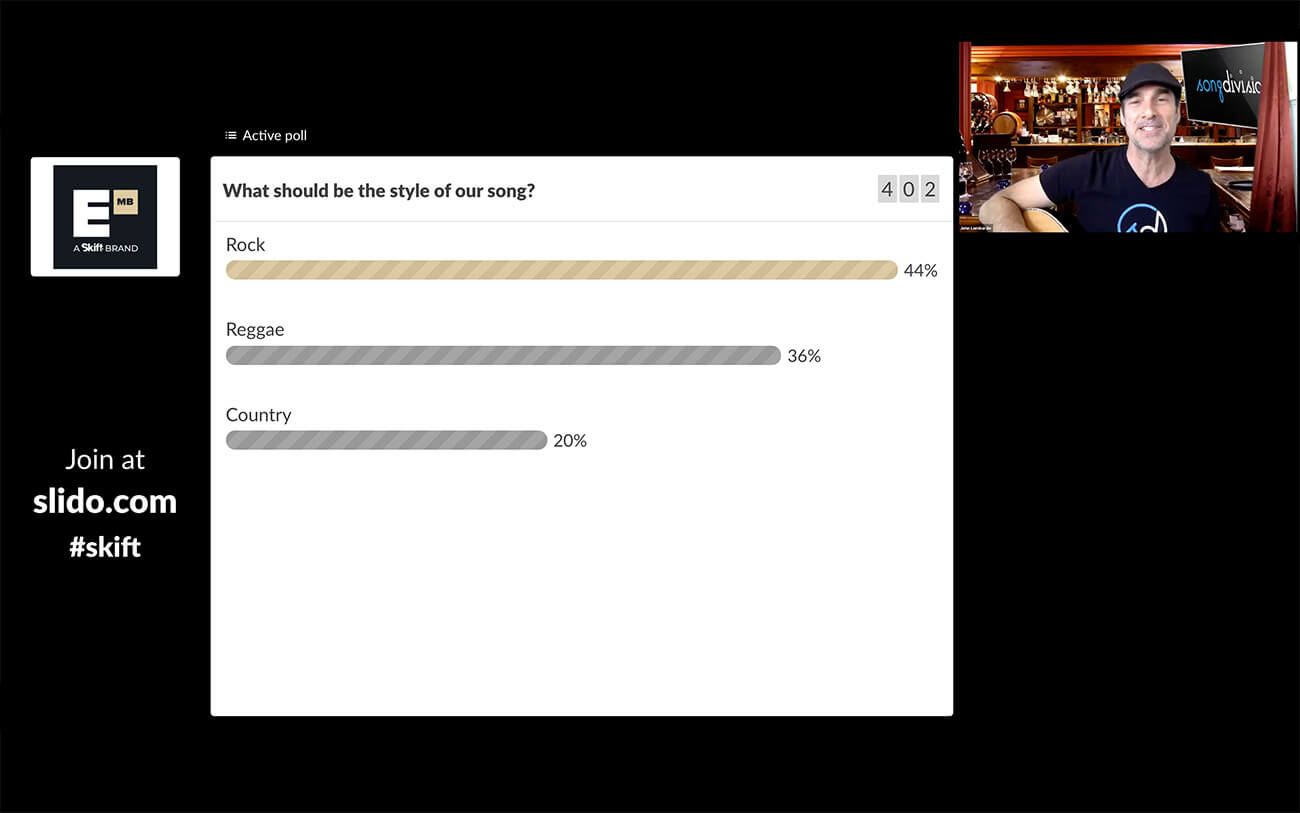
During the break half-way through, John engaged the audience again.
This time, participants had to come up with words that rhyme with fire and fantastic. They sent their submissions via open text poll and John picked two – inspire and bombastic. He then challenged himself to incorporate these two terms into the final lyrics.
Finally, it was showtime for John. As we moved to the closing session, he delivered the full song with custom lyrics live. It was truly brilliant, and the audience burst into virtual applause, judging from the stream of enthusiastic comments coming through.
Watch it here at 3:39:50.
7. Community building questions over the break
Networking at virtual events is tough.
But we didn’t let this discourage us. And we also didn’t just want to have an old, boring, traditional break.
So we designed an activity to keep everyone engaged.
We asked everyone to step away from their computer and walk around their flat (credits to Jan-Jaap id der Maur). Their task was to find one thing from their home office that they’d like to bring to future events, to delight their participants.
I gave them a few examples to get their creative juices flowing.
Is it gourmet coffee?
Or comfortable seating?
Noise-canceling headphones to filter out background noise?
Off they went. Once people got back, they posted their ideas via an open text poll.
Julius and I were moderating the whole exercise, chipping in with our own comments and ideas.
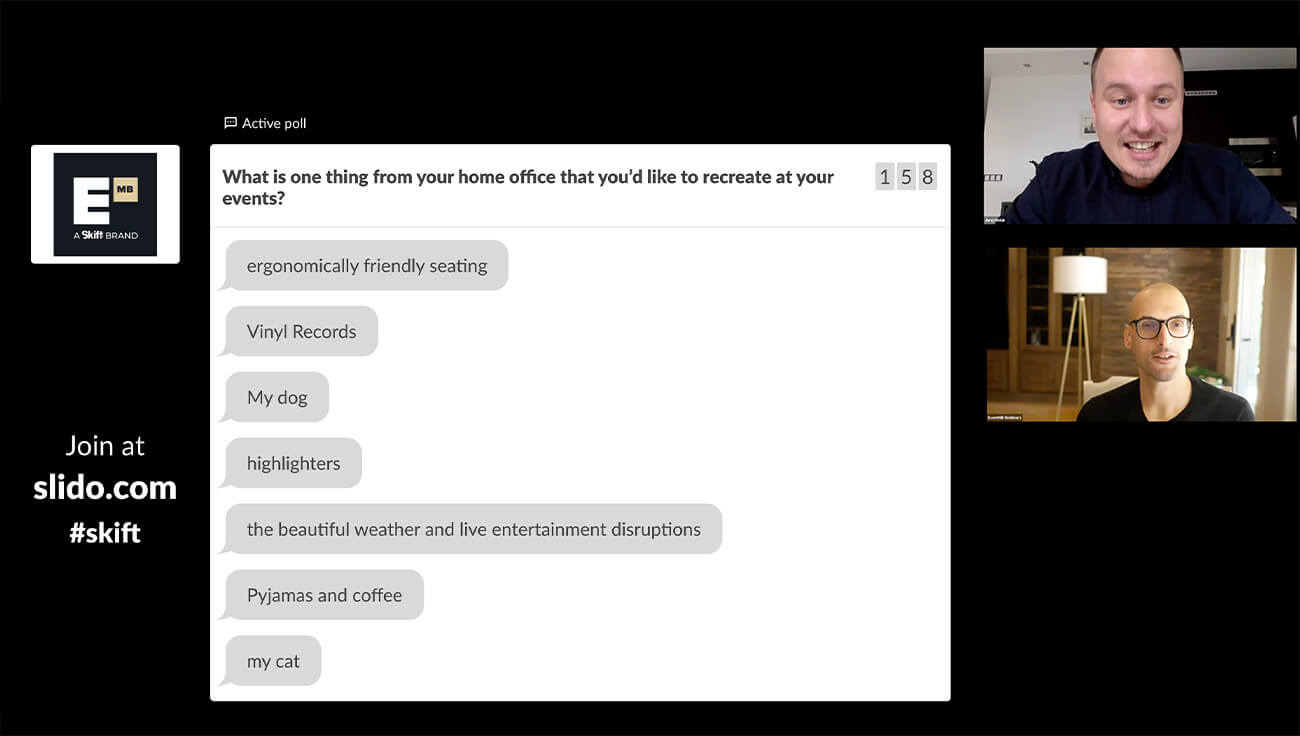
Then we moved to the next community-building question.
In the past months, the whole community underwent a steep learning curve, as many of us pivoted to virtual.
So we wanted to tap into the collective knowledge of fresh ideas, and bring forth individual learnings that could inspire everyone.
We asked people, “What was the key learning of the past three months?”
After 15 seconds, a stream of brilliant ideas flowed in.
It worked like a charm – the community was on fire. I only wished we’d had more time for other questions.
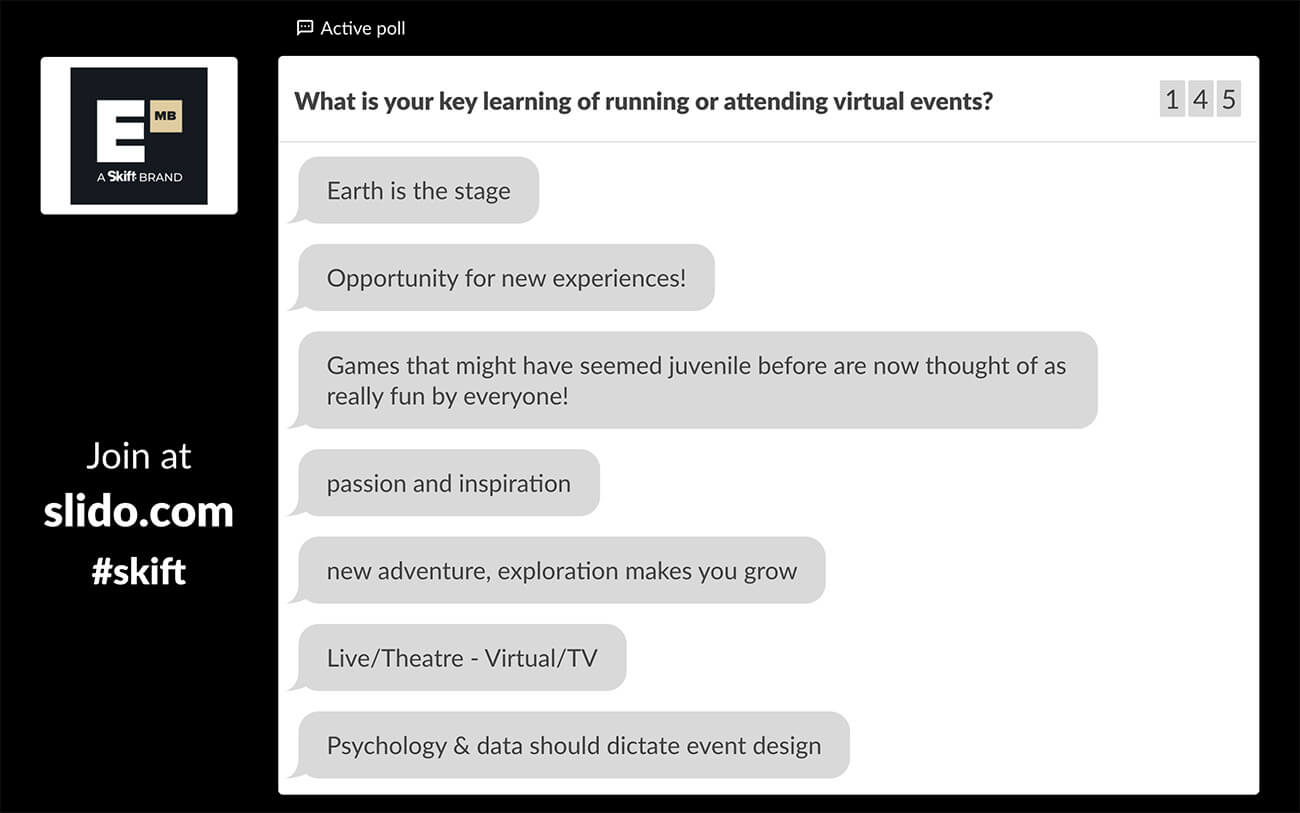
8. Empty-chair panel
After the break, it was time to experiment with one more format – an empty chair panel.
The idea was to leave one virtual chair open and get someone from the audience to fill it.
At the start of the event, we introduced the concept and asked people to fill in a quick survey to share their contact details and opinion on digital engagement. The more thought-provoking, the better.
It was all voluntary. Still, more than 60 attendees participated.
In the end, Julius picked volunteer, Samatha, and invited her to join the panel of speakers.
The group engaged in a dynamic conversation, challenging all aspects of digital engagement, and giving practical tips in response to the audience questions.
It was an energizing finish to the ENGAGE event.
To sum it all up
It always takes courage to organize an event for event professionals. But it’s even more challenging when the topic is virtual engagement. You need to succeed twice.
With ENGAGE, Julius and the team did tick both boxes. They put together a great meeting and also succeeded in keeping people engaged throughout.
I hope this article puts some of the ideas that we tested into a practical perspective. In case you didn’t get the chance to be there, I encourage you to watch the recording here.

